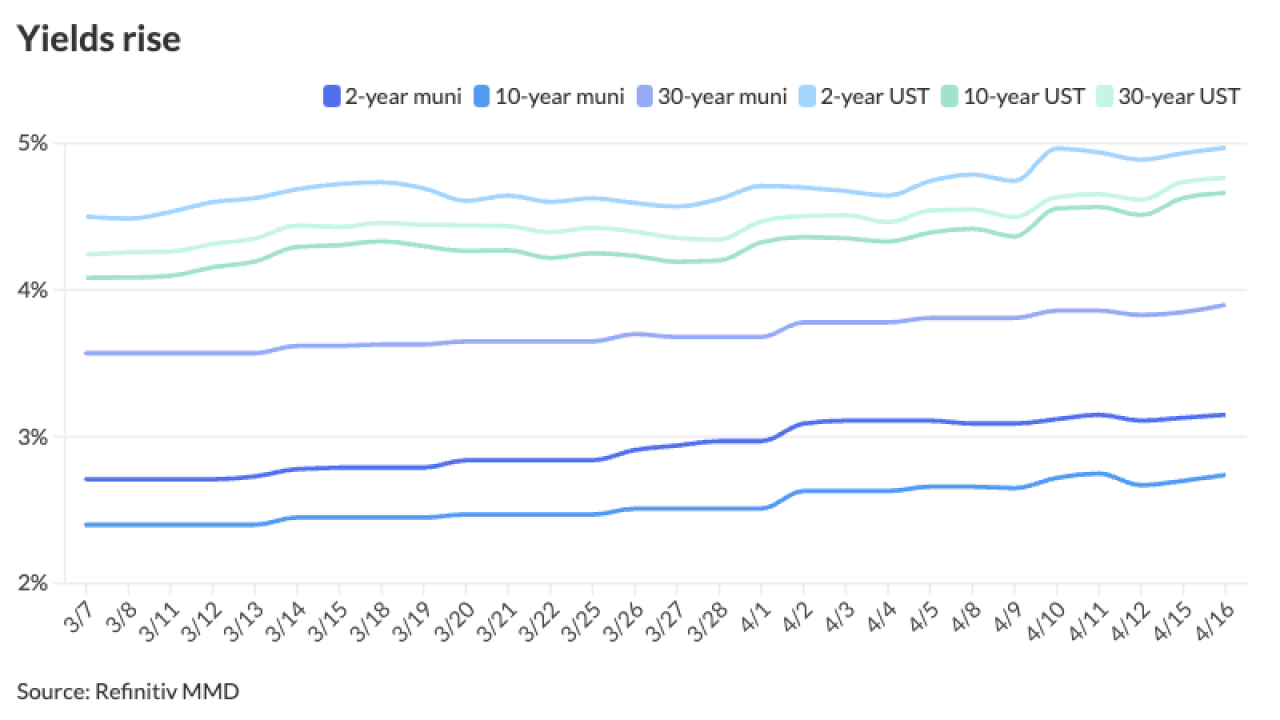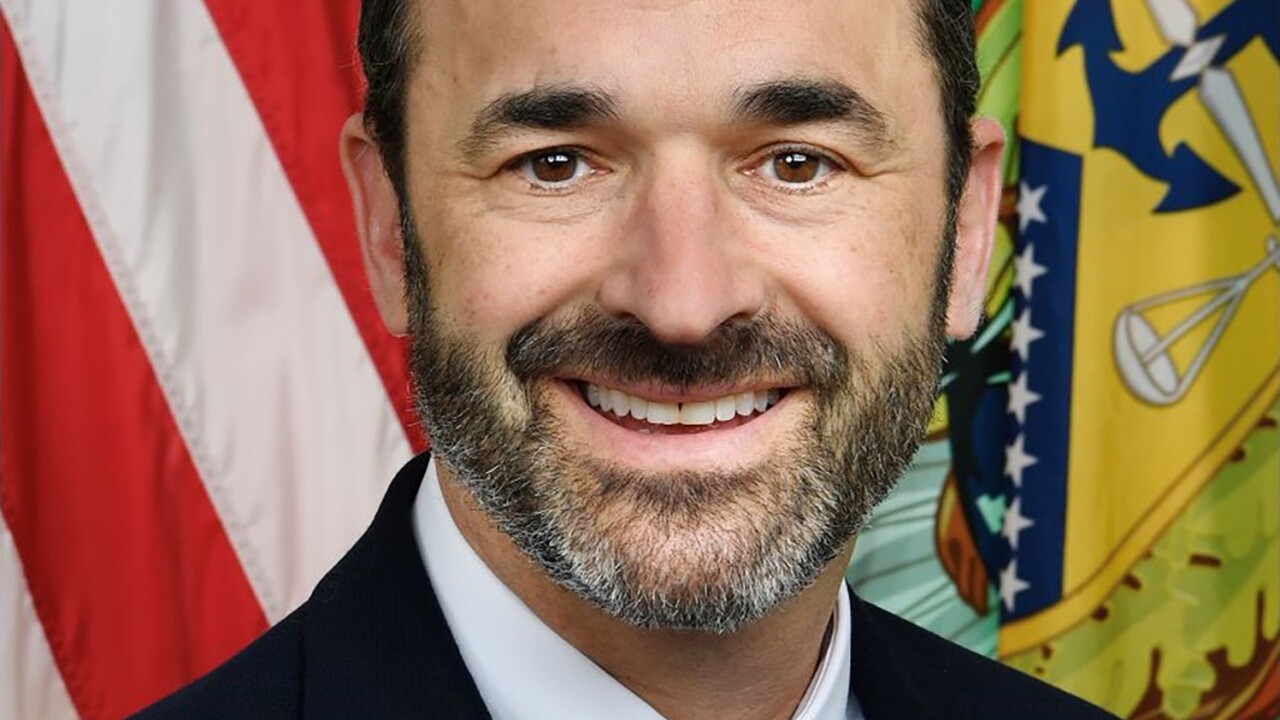
CHICAGO — Facing a $13 billion deficit, Illinois Gov. Pat Quinn yesterday unveiled a $52 billion fiscal 2011 budget that cuts spending by $2.4 billion, relies on $4.7 billion in deficit borrowing, and leaves nearly $6 billion in bills unpaid.
The state’s embrace of the latter two actions to address $12 billion of red ink in the fiscal 2010 budget drove a round of downgrades. Analysts have warned of further action as the state remains pressured by a liquidity crisis, poor revenue performance, and failed legislative action to address its structural budget problems.
Quinn pressed lawmakers to consider a 1% income tax surcharge that could generate between $2.8 billion and $3 billion of new revenue annually, but he tied it to education funding, saying the hike could fend off his proposal to cut $1.3 billion in K-12 and higher education spending.
The governor — stung by the General Assembly’s refusal to approve an increase of 1.5 percentage points in the state’s flat 3% income tax rate last year — did not include the tax hike in his spending blueprint, which includes a $24.8 billion general fund. Instead, he laid out a grim picture of deep cuts to education, local government revenue, and health and human services programs absent any new revenue.
“You must make some tough choices as well,” the governor told lawmakers. “Either by approving a plan for new education revenue or by passing a budget that will starve public education at every level in every community in Illinois and force property taxes even higher.”
Quinn did not offer details on whether other funding cuts would restored. He also did not address whether the additional revenue left after education funding is restored would go to reduce his proposed level of borrowing or to lower the amount of bills that would be pushed until the next fiscal year. Illinois’ fiscal year runs July 1 to June 30.
Increasing revenue was one of the five “pillars” Quinn said are needed to shore up the state’s fiscal house. The others include job creation, “strategic” borrowing, cost reductions, and increased federal support.
Quinn defended his borrowing plan but offered few details, tying the plan to bill payment.
“When we fail to pay our bills, we are basically borrowing money from public schools, colleges, social service agencies, small business owners, and other community partners throughout Illinois,” he said.
The state is $5 billion behind on bill payments and pays a 12% interest rate on those debts, a significantly higher rate than the state garners when borrowing in the tax-exempt market.
Illinois would use some form of borrowing from the tax-exempt market and internal funds to raise the $4.7 billion. Budget documents refer to the use of “short-, intermediate-, and long-term borrowing … to provide the state the flexibility to address many current needs while maintaining a long-term focus.”
The budget documents note, however, that “until Illinois addresses its structural deficit — and takes on the fundamental challenges threatening the budget and the state — its bond ratings will continue to suffer. Future rating downgrades could be quite costly, and are likely if no corrective actions are taken.”
On job creation, the budget includes a $2,500 tax credit for small businesses that create new positions. The budget anticipates Congress will keep intact its 62% reimbursement rate for Medicaid that expires later this year.
In addition to the education cuts, the proposed plan slashed $325 million in health care spending. Human services programs face $276 million in cuts. Local governments would see their share of state income taxes fall to 7% from 10%, adding $300 million to the state’s general fund. The state would save another $200 million in personnel costs by imposing furlough days and other employee concessions.
The budget shaves $300 million off the scheduled pension payment of $4.62 billion recognizing savings from pension reforms that the General Assembly must pass. The reforms would impact new employees only, in the form of reduced benefits, but no additional details were provided.
The budget estimates that overall, the reforms would trim $100 billion off its payment schedule through 2045 when the state is required by law to reach a fully funded status. Illinois issued debt to cover $3.5 billion of its fiscal 2010 $4 billion pension payment. It closed out fiscal 2009 with a $62.4 billion unfunded liability, for a funded ratio of just 51%.
The budget relies on the state’s key revenues returning to positive territory in fiscal 2011 after declining by $2 billion over the last two years. Sales taxes are expected to grow by 1.5%, individual income taxes by 2.7%, and corporate income taxes by 20%. The three represent about 84% of the general fund.
Some Democrats praised Quinn for raising the issue of a tax increase, a politically difficult task given the looming election in November. Quinn faces Republican Sen. Bill Brady of Bloomington, who has proposed a 10% across-the-board cut and no tax increase.
“The people of Illinois don’t want taxes increases, they are hurting, and so we should admire the governor for having the courage to stand up in these times and say, look, we wish to maintain the fiscal integrity of the state,” said House Speaker Michael Madigan, D-Chicago, who added that his admiration doesn’t mean the tax will pass.
House Minority Leader Tom Cross of Oswego attacked the idea.
“It’s the lack of specifics that is telling in this budget address,” he said, accusing the governor of “holding kids hostage” by linking the education cuts to the tax increase. Democrats hold a majority in the House and a supermajority in the Senate. A supermajority vote is needed on any bonding measures.
The Civic Federation of Chicago, a Chicago government review organization, blasted the plan. The group said in a recent report it could support a tax increase if it was part of a plan that included pension reforms for current and future employees and cuts.
“The Civic Federation is very concerned that the proposed budget does not appear to address the state’s structural deficit and appears to rely on borrowing to pay for operating expenses,” said president Laurence Msall. “That would be both expensive and fiscally irresponsible.”
Rating agencies are watching to see how the state balances its books. Illinois’ $23 billion of outstanding GOs are rated A by Fitch Ratings, which has the credit on negative watch; A2 by Moody’s Investors Service, which assigns a negative outlook; and A-plus by Standard & Poor’s, which also assigns a negative outlook.





